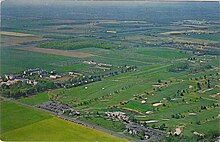| Total population | |
|---|---|
| 6,268,769[1] 1.9% of the total U.S. population (2018) | |
| Regions with significant populations | |
| California · New Jersey · New York · Texas · Massachusetts · Illinois · Florida · Georgia · Maryland · Virginia · Washington · Pennsylvania · Nevada | |
| Languages | |
| Lingua franca English ACS Most common South Asian languages (in descending order) Hindi–Urdu · Telugu · Gujarati · Bengali · Tamil · Punjabi · Nepali · Marathi · Malayalam · Kannada[2] Other languages with official or provincial status in South Asia (in alphabetical order) Assamese · Balochi · Boro · Dogri · Dzongkha · Kashmiri · Kokborok · Konkani · Lepcha · Maithili · Maldivian · Meitei · Mizo · Odia · Pashto · Santali · Sikkimese · Sindhi · Sinhala | |
| Religion | |
| Mainly Hinduism · Islam · Sikhism · Christianity Minority Jainism · Buddhism · Zoroastrianism · Baháʼí · Judaism · Irreligion |


South Asian Americans or Desi Americans are Americans of South Asian ancestry. The term refers to those who can trace back their heritage to South Asia, which includes the countries of Afghanistan, Bangladesh, Bhutan, India, Maldives, Nepal, Pakistan, and Sri Lanka.[6][7][8][9] The South Asian American diaspora also includes generations of South Asians from other areas in the world who then moved to the United States, areas such as Guyana, Trinidad and Tobago, Canada, the United Kingdom, the Netherlands, France, Australia, New Zealand, Fiji, South Africa, Uganda, Kenya, Tanzania, Mauritius, Singapore, Malaysia, Suriname, other parts of the Caribbean, etc.[10] In the United States census, they are a subcategory of Asian Americans, although individual racial classification is based on self-identification and the categorization is "not an attempt to define race biologically, anthropologically, or genetically".[11]
- ^ samip (2017). "ASIAN ALONE OR IN ANY COMBINATION BY SELECTED GROUPS". United States Census Bureau. Archived from the original on 2020-02-14. Retrieved 2019-04-24.
- ^ "ACS B16001". ACS B16001. U.S. Census Bureau. Retrieved 26 December 2022.
- ^ "Yearbook of Immigration Statistics: 2012 Supplemental Table 2". U.S. Department of Homeland Security. Archived from the original on 3 April 2013. Retrieved 14 April 2013.
- ^ "Yearbook of Immigration Statistics: 2011 Supplemental Table 2". U.S. Department of Homeland Security. Archived from the original on 8 August 2012. Retrieved 14 April 2013.
- ^ "Yearbook of Immigration Statistics: 2010 Supplemental Table 2". U.S. Department of Homeland Security. Archived from the original on 12 July 2012. Retrieved 14 April 2013.
- ^ "Demographic Information | SAALT". Retrieved 2023-10-19.
- ^ https://med.nyu.edu/sites/default/files/asian-health2/chnra_southasian_0.pdf
- ^ http://www.saapri.org/about-us/our-community/ "South Asian Americans, including people of Indian, Pakistani, Bangladeshi, Sri Lankan, Nepali, and Bhutanese descent".
- ^ Danico, Mary Yu (2014-08-19). Asian American Society: An Encyclopedia. SAGE Publications. ISBN 978-1-4522-8189-6.
- ^ "Demographic Information | SAALT". Retrieved 2021-07-06.
- ^ "About Race".
© MMXXIII Rich X Search. We shall prevail. All rights reserved. Rich X Search
